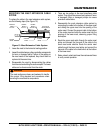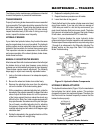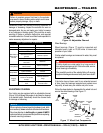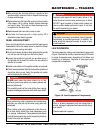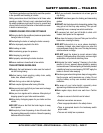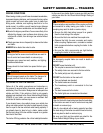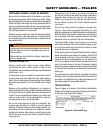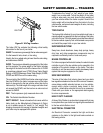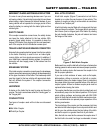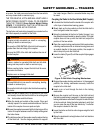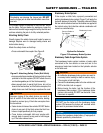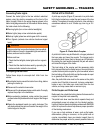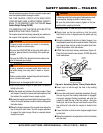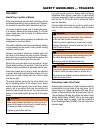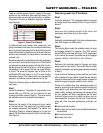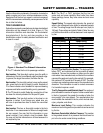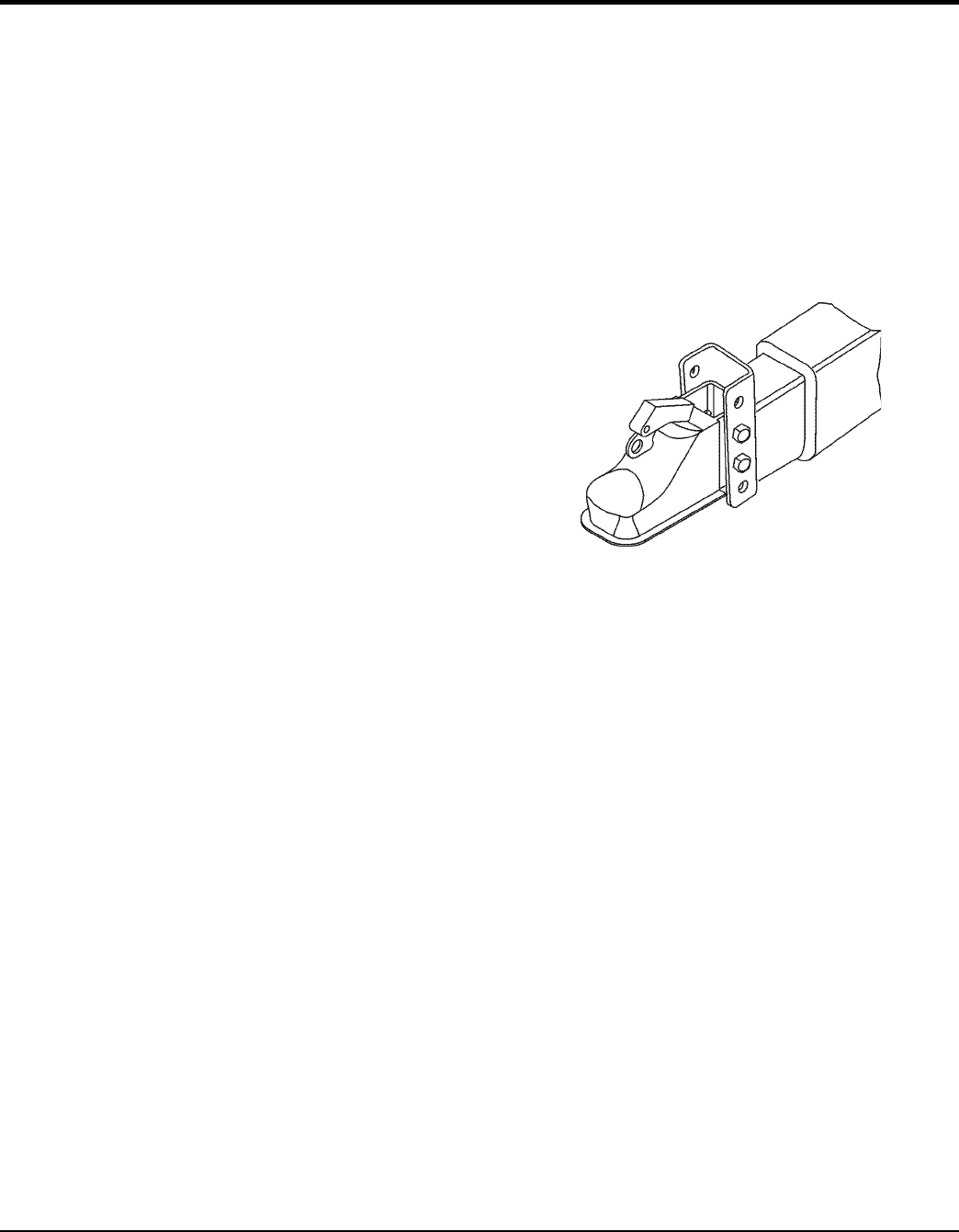
MLT25 SERIES LIGHT TOWER • OPERATION MANUAL — REV. #0 (11/28/12) — PAGE 31
SAFETY GUIDELINES — TRAILERS
EMERGENCY FLARES AND TRIANGLE REFLECTORS
It is wise to carry these warning devices even if you are
not towing a trailer. It is particularly important to have these
when towing a trailer because the hazard fl ashers of your
towing vehicle will not operate for as long a period of time
when the battery is running both the trailer lights and tow
vehicle lights.
SAFETY CHAINS
If the coupler connection comes loose, the safety chains
can keep the trailer attached to the tow vehicle. With
properly rigged safety chains, it is possible to keep the
tongue of the trailer from digging into the road pavement,
even if the coupler-to-hitch connection comes apart.
TRAILER LIGHTING AND BRAKING CONNECTOR
A device that connects electrical power from the tow vehicle
to the trailer. Electricity is used to turn on brake lights,
running lights, and turn signals as required. In addition, if
your trailer has a separate braking system, the electrical
connector will also supply power to the brakes from the
tow vehicle.
BREAKAWAY SYSTEM
If the trailer coupler connection comes loose, the breakaway
system can actuate emergency hydraulic brakes depending
on the type of actuator on the trailer. The breakaway cable
must be rigged to the tow vehicle with appropriate slack
that will activate the system if the coupler connection
comes loose.
JACKSTAND
A device on the trailer that is used to raise and lower the
coupler. The jack is sometimes called the “landing gear” or
the “tongue jack”.
COUPLER TYPES
Two types of coupler used wit the trailer are discussed
below.
Ball Hitch Coupler
Pintel Eye Coupler
BALL HITCH COUPLER
A ball hitch coupler (Figure C) connects to a ball that is
located on or under the rear bumper of tow vehicle. This
system of coupling a trailer to a tow vehicle is sometimes
referred to as “bumper pull.”
A ball hitch trailer may be fi tted with a tongue jack that can
raise and lower the coupler. The tongue jack is mounted to
the A-frame (front or tongue) part of the trailer. By rotating
the jack handle clockwise, the jack will extend and raise
the tongue of the trailer.
Figure C. Ball Hitch Coupler
Before each tow, coat the ball with a thin layer of automotive
bearing grease to reduce wear and ensure proper operation.
Check the locking device that secures the coupler to the
ball for proper operation.
If you see or feel evidence of wear, such as fl at spots,
deformations, pitting or corrosion, on the ball or coupler,
immediately have your dealer inspect them to determine
the proper action to prevent possible failure of the ball and
coupler system. All bent or broken coupler parts must be
replaced before towing the trailer.
The coupler handle lever must be able to rotate freely and
automatically snap into the latched position. Oil the pivot
points, sliding surfaces, and spring ends with SAE 30W
motor oil. Keep the ball socket and latch mechanism clean.
Dirt or contamination can prevent proper operation of the
latching mechanism.
The load rating of the coupler and the necessary ball size
are listed on the trailer tongue. You must provide a hitch and
ball for your tow vehicle where the load rating of the hitch
and ball is equal to or greater than that of your trailer.
Also, the ball size must be the same as the coupler size. If
the hitch ball is too small, too large, is underrated, is loose



